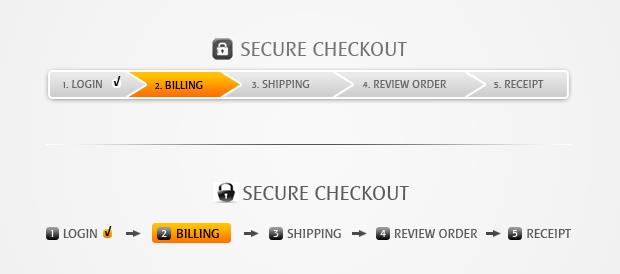Don’t Miss Out on These 5 Ways to Optimize Your Ecommerce Website Conversion Rate
Is your e-commerce website getting the conversions you need to turn a profit? If you answered “No,” you’re not alone. Increasing your conversion rate takes some hard work, leveraging the best-fitting tools, and implementing the right strategies to turn casual visitors into paying customers.
While all this can seem overwhelming, there are easy-to-follow ways to help you optimize your e-commerce website conversions — and that’s what we’ll cover in this guide.
Also, if you have an online business, you definitely need an affordable, fast, secure, and fully-dedicated host. WPMU DEV hosting ticks all the boxes. Check their plans here and get 20% off.
1. Highlight your Unique Selling Proposition
Your Unique Selling Proposition (USP) helps your brand stand out from competitors. However, if you don’t convey your USP properly to your potential customers, you’re not likely to convince them of your brand’s distinct value and gain conversions.
Make the most of your USP by helping shoppers make purchasing decisions. Highlight what makes your brand, products, and services unique from your competitors.
Ensure you prominently display and convey your USP on your web pages with these tips:
- Make your tagline below your logo functional. Ensure it can effectively communicate your brand’s differentiator.
- If you have certification logos that speak to your USP, show them prominently above the fold to draw your visitor’s attention.
Saddleback Leather’s USP is a great example since it conveys the brand effectively in a catchy and witty way.
A strategically designed and created USP lets you convey your brand’s unique value to your visitors effectively. It also helps you build trust with your potential customers, encouraging them to act on your conversion goals and boosting your sales. Besides your USP, show other services or website features that make your brand unique.
For example, if you use robust customer service software to deliver instant and seamless client support services, highlight that as another benefit potential customers get when they buy from you.
2. Secure Your Website
Many website visitors can hesitate about buying from you if they don’t trust your brand yet. One way of building that trust is to secure your website. This helps boost your company’s credibility and trustworthiness. Plus, it helps assure customers that any personal information they share is safe during transactions.
Some of the ways to keep your e-commerce website secure include:
- Usage SSL certificates. Switch from HTTP to HTTPS using an SSL certificate — a security protocol that encrypts the link between a web browser and a web server. It helps secure your e-commerce website transactions and keep your customer information private and secure.
- Regularly update your current Content Management Software (CMS) versions and plugins. This helps ensure you have the latest bug fixes and protect your website and customer data from common security threats and exposures.
Securing your website can take some time, effort, and money. However, you’re better off investing in keeping your site safe to build trust with visitors and protect your company and customers from cyber-attacks. For instance, you can create your online store on an secure eCommerce platform that meets all cyber-safety requirements.
3. Cater To Your Early Stage Visitors
It’s critical to focus on the bottom of your sales funnel to nudge prospects into converting. However, it’s just as important to put time and effort into leads at the top and middle stages of the funnel.
You’ll need to cater to your early-stage visitors with these tips:
- Create content for early-stage visitors, including detailed guides, explainer videos, etc. This allows you to educate potential customers, increase their trust in your brand, and influence their purchase decisions. Streamline your content planning, creation, and publishing using Strive, a WordPress editorial calendar plugin.
- Avoid immediately jumping into asking prospects to buy or sign up. Let potential customers know who your brand is, why you’re trustworthy, and what you want them to do before asking them to act on your conversion goals.
Layout your product’s and service’s value first to help early-stage visitors learn the benefits of buying from you. Enhance your approach with strategic sales funnel planning, ensuring a comprehensive focus across all customer journey stages rather than solely extracting value from your bottom-funnel.
While keeping your sales funnel is no easy feat, you can always get help from professionals such as the Socialfix digital marketing agency.
4. Keep Choices to a Minimum
How you display your items depends on your product variety and offers. However, displaying too many product choices can cause decision paralysis for shoppers, leading your potential customers to put off buying or subscribing.
This can overwhelm visitors, causing them to hesitate, get distracted, and even abandon their shopping carts. The solution? Limit your visitors’ choices to help them make purchasing decisions faster and easier.
Here are a few tips to help you do just that:
Display a few top-level categories. Show several top-level product categories to help shoppers get to the page they want easily without getting bombarded with all the items all at once.
- Emphasize product distinctions. Highlight unique product qualities, such as specific colors or styles, to instantly tell visitors what distinguishes the item from other products you offer. It allows you to provide product variety without overwhelming visitors with too many choices.
- Include target keywords in your product descriptions. One of the secrets to product descriptions that convert is to include target keywords. It allows shoppers to search products on your site using keywords and only get relevant results, narrowing their choices down.
Simplify making purchase decisions and boost conversions and sales by deliberately and strategically using your product page design and information architecture.
5. Streamline the Checkout Experience
A long and complex checkout process can discourage visitors from completing their purchases and cause them to abandon their shopping carts. Optimize the checkout process to provide a seamless experience for your shoppers and encourage them to buy.
Consider these few tips to help you streamline the checkout experience:
- Limit distractions. Keep the number of elements within the checkout page to the necessary. This helps reduce distractions, allowing shoppers to focus on completing their purchases.
- Provide a progress indicator. Set the shopper’s expectation by displaying a progress bar and the next steps in the checkout process. Use specific labels and communicate what each step entails. Doing so helps assure visitors that they can finish checking out in no time and with minimum effort, enticing them into going through with the purchase.
- Display additional charges early. Avoid surprising visitors with taxes and additional fees since this can discourage them from completing their purchase.
Show all included charges as early as possible, so shoppers know exactly what they will pay. Additionally, capture your potential customer’s email address early in the checkout process. This allows you to contact visitors even if they leave without completing the purchase.
You can use this to send abandoned cart emails and other relevant promotions to entice visitors back to your store. For example, if you sell services for online events, you can send free ebooks on the differences between summits and conferences to your prospects.
Maximize your bottom-funnel opportunities and increase conversions by reducing friction and distractions during the checkout process.
Level up Your Conversion Optimization Efforts
While getting significant conversions doesn’t happen overnight, the tips in this guide can help you supercharge your efforts. Know the areas in your conversion rate optimization initiatives you’re succeeding or failing and make the appropriate adjustments.
Putting in the hard work now can pay off when you skyrocket your conversions long-term.





